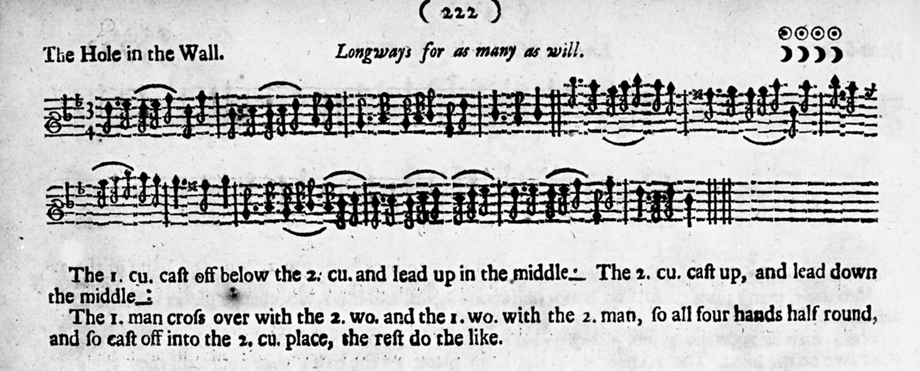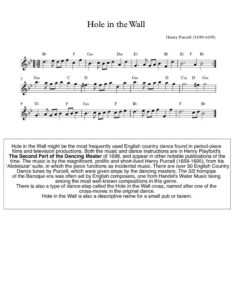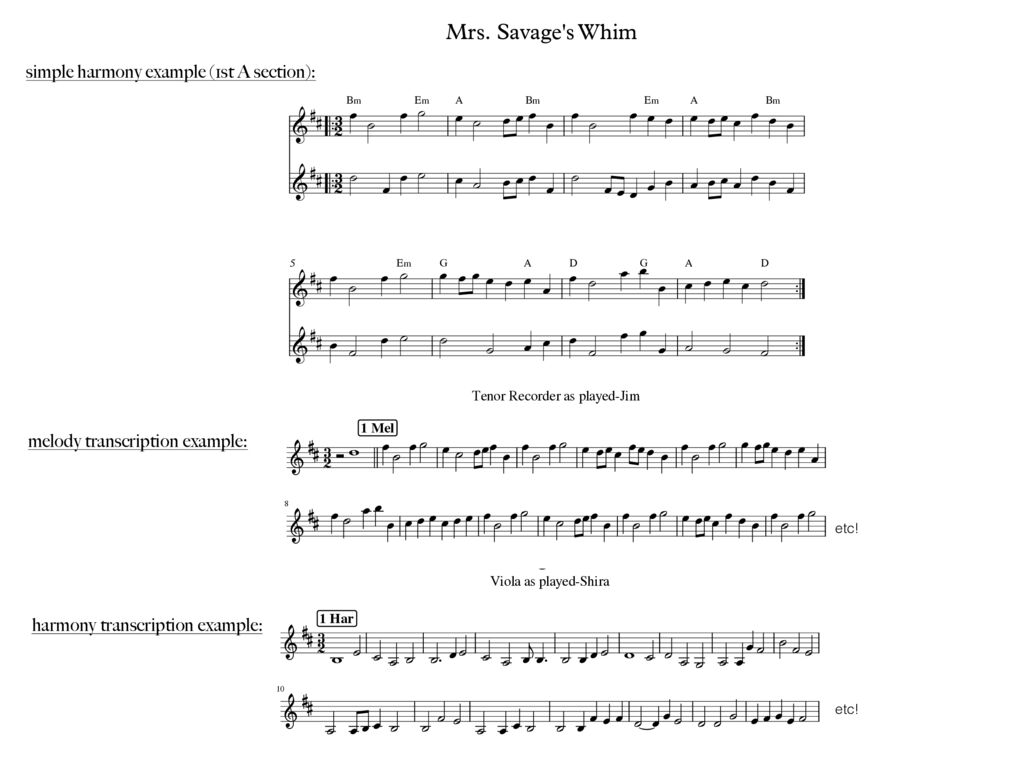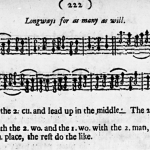Hole in the Wall (3/2 Bb major)
$6.00
3/2, Bb major
Info & sample clip
Include the Transcription and Simple Harmonies PDF for $2
$2.00Add to cart
Bulk discount
Include the Transcription and Simple Harmonies PDF for $2
$2.00Add to cart
One can approach this music in as many ways as there are people playing it, but a few general approaches have become common practice among English Dance musicians.
Often in a social dance situation, there will be 3 musicians, most commonly playing: a piano, or sometimes instead a different kind of chordal instrument – and 2 other instruments, often fiddles, winds, plucked strings, among others. (but not always 3 people – for dance events there at times are more players, or sometimes just a duo, and some communities have more of a small orchestra).
If there are 3 players, there are general musical roles that get shared and swapped throughout the course of a dance. These can be described as melody, harmony, and backup (or chords).
Those roles – as with nearly everything musical – are somewhat fluid, but can be practiced separately. In Playing with Phantoms, we’ve provided a chordal backup on piano, harpsichord, or guitar, which occasionally may have a few chordal variations from the musical chart (which generally has melody and chords only). The chords in the sheet music are suggested as a possible likely solution, but all melodies can imply or inspire a choice of chords – a wonderful exploration in itself. Mostly our chords stay fairly consistent, and when they vary, we hope you enjoy the adventure! Many chordal players also will take melodies as well.
We have also a melody track, which usually stays fairly close to the sheet music, but does explore variations, as is common in an English Country Dance situation. Some of these variations are ornamental – such as filling in intervals, providing trills or mordants or other such twiddles, or in some cases varying the melody more considerably from the chart, but still intentionally connecting to the chord structure and the contour of the melody.
Harmony parts are not usually written out in English Country Dance sheet music, and part of the delight in playing this music is the practice of improvisation. In Playing with Phantoms, we have included some straightforward harmony parts as one option, and transcriptions of our improvisations as well, but we encourage you to explore making your own parts. (This applies of course to varying melody lines and chordal substitutions)
Here are some possible quick-n-dirty paths to try in making your own harmony parts:
1. Find a note in the chord and play it, and then switch to a note in the next chord, and so on- if you find the closest possible solution between lines based on chords, you can make a nice line as well.
2. Find places in the melody where common parallel harmonies for these styles of music will work nicely, such as 3rds or 6ths below or above the tune. The harmony parts we’ve provided hold many examples of this.
3. Play rhythmically within the suggested chords – this will be quite different for varying instruments – on a fiddle, double-stops with consistent rhythms (or fun, cross-rhythms) work very well, whereas on a higher wind instrument, one would punctuate rhythm in a more idiomatic way.
4. Play not so much at the same time as the melody, but take on more of a filling-in role, such as playing between phrases, bringing the end of one section into the beginning of the next one, more of a musical commentary.
5. Double the melody occasionally, preferably in octaves or on different instruments.
6. Try varying musical approaches between A sections and B sections, or better yet, watch the dance and respond musically to the movement.
The cornerstones to being a good traditional dance musician are listening to (and responding to) the other musicians, and playing to the dancers. If the chordal player starts doing chord substitutions, it is incumbent on the harmony player to nimbly react by changing what they are playing, or at least getting out of the way. In live situations remember that you are playing in support of the dance—generally best done by watching them. However, while playing with the Phantoms, you will have to conjure up your own Phantom Dancers … but they can be as elegant or rowdy as you want. The possibilities are endless!!!!




